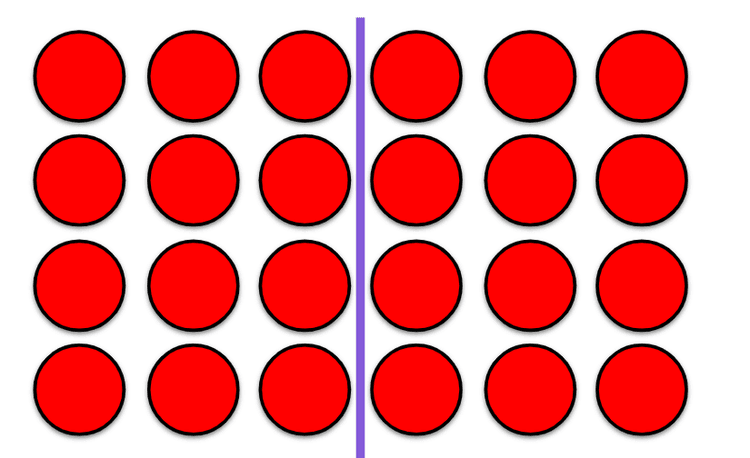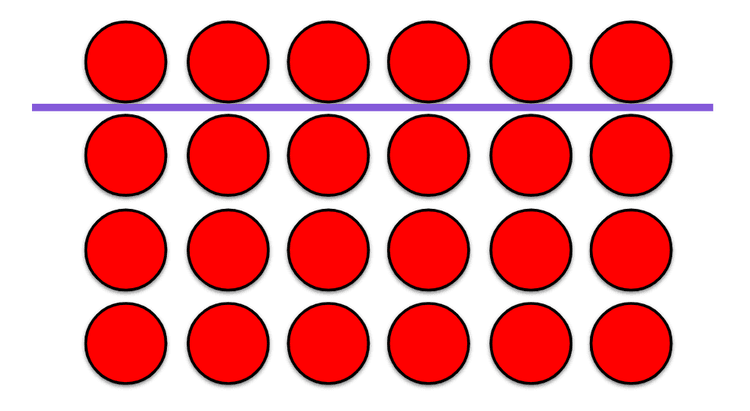Myths about teaching can hold you back
- Year 4
Explain which is the most efficient factor to partition to solve a multiplication problem
I can explain which is the most efficient factor to partition to solve a multiplication problem.
- Year 4
Explain which is the most efficient factor to partition to solve a multiplication problem
I can explain which is the most efficient factor to partition to solve a multiplication problem.
These resources were made for remote use during the pandemic, not classroom teaching.
Switch to our new teaching resources now - designed by teachers and leading subject experts, and tested in classrooms.
Lesson details
Key learning points
- Multiplying a number by a group of numbers added together is the same as doing each multiplication separately.
- This means a factor can be partitioned to solve multiplication problems more efficiently.
- It is important to consider which factor to partition so that it enables you to solve a problem more efficiently.
- The factor being partitioned can represent the group size or the number of groups.
Keywords
Multiples - A multiple is the product of a number and an integer.
Partition - Partitioning is the act of splitting an object or value down into smaller parts.
Distributive Law - The distributive law says that multiplying a number by a group of numbers added together is the same as doing each multiplication separately.
Common misconception
Children may inaccurately describe which factor has been partitioned to solve a multiplication problem.
Present children with lots of opportunities to create arrays, split them using a partitioning line and describe what they see before going on to use this to calculate.
To help you plan your year 4 maths lesson on: Explain which is the most efficient factor to partition to solve a multiplication problem, download all teaching resources for free and adapt to suit your pupils' needs...
To help you plan your year 4 maths lesson on: Explain which is the most efficient factor to partition to solve a multiplication problem, download all teaching resources for free and adapt to suit your pupils' needs.
The starter quiz will activate and check your pupils' prior knowledge, with versions available both with and without answers in PDF format.
We use learning cycles to break down learning into key concepts or ideas linked to the learning outcome. Each learning cycle features explanations with checks for understanding and practice tasks with feedback. All of this is found in our slide decks, ready for you to download and edit. The practice tasks are also available as printable worksheets and some lessons have additional materials with extra material you might need for teaching the lesson.
The assessment exit quiz will test your pupils' understanding of the key learning points.
Our video is a tool for planning, showing how other teachers might teach the lesson, offering helpful tips, modelled explanations and inspiration for your own delivery in the classroom. Plus, you can set it as homework or revision for pupils and keep their learning on track by sharing an online pupil version of this lesson.
Explore more key stage 2 maths lessons from the Understand and represent multiplicative structures unit, dive into the full primary maths curriculum, or learn more about lesson planning.

Licence
Prior knowledge starter quiz
6 Questions
Q1.What is the missing number in the equation below? 8 × = 24
Q2.What is the missing number in the equation below? 7 × = 56
Q3.What is the missing number in the equation below? × 12 = 72
Q4.Tick the two equations that show that multiplication is commutative.
Q5.There are 500 potatoes shared amongst 24 crates. Match the objects with group size or number of groups.
number of groups of potatoes
group size
Q6.Tick all the equations, showing the distributive law, that are represented by this stacked number line.

Assessment exit quiz
6 Questions
Q1.Which of these equations represents this image?

Q2.Which of these equations represents this image?



